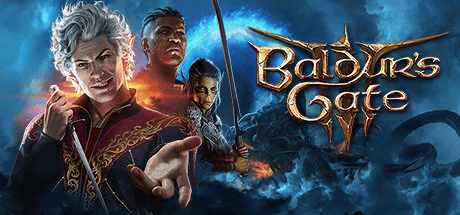DOS2 Mod Chinese Localization
TLDR
This article provides a detailed guide on how to localize Odinblade's series of class MODs for DOS2 into Chinese. The main steps include:
- Using LSLib Toolkit to unpack the MOD's PAK files
- Locating and translating localization files in the MOD, including content in Public/Localization and Mods/Localization
- Using The Divinity Engine2 editor for deeper localization work, handling text not included in standard localization files
- Repackaging and publishing the localization MOD
Through this method, the author successfully provided complete Chinese localization support for Odinblade's series of class MODs, gaining approximately 3000 subscribers.

Introduction
Around December of last year, I started playing Divinity: Original Sin 2 (DOS2) again with my gaming partner, Larian Studios' work before Baldur's Gate 3. Despite Baldur's Gate 3's extraordinary achievements, becoming one of only four games to achieve the grand slam (TGA, Golden Joystick, D.I.C.E, Game Developers Choice Awards) alongside The Elder Scrolls V: Skyrim, The Legend of Zelda: Breath of the Wild, and Elden Ring, DOS2 remains a benchmark for CRPGs.


DOS2 has a massive MOD community, with over 50,000 MODs on Steam Workshop. Among the most highly rated is the Odinblade series of class MODs, which expands the original 8 classes and introduces 2 new classes, boasting approximately 500,000 subscribers and growing. In my opinion, this MOD's status is comparable to Terraria's Calamity mod, both significantly influencing the base game with extensive content while maintaining balanced gameplay mechanics.

I was eager to try it out, but there was no Chinese localization available on the Workshop. I could only find scattered Chinese translations for various classes on Chinese gaming forums like 3DM and Bahamut. When I downloaded and started playing, I found that the Chinese translations were merely functional, only translating skill names and descriptions, while many item names, status descriptions, and NPC dialogues remained in English. This didn't meet my expectations, and I was curious about why previous translators had left so much content untranslated. Therefore, I decided to improve these translations myself.
MOD Localization Process
1. Unpacking
When you click the subscribe button in the Workshop, Steam automatically downloads the MOD to your game directory. Subsequently, every time you open the game, Steam automatically checks for differences between the Workshop MOD version and your local MOD version to perform automatic updates. When we open DOS2's MOD folder, typically located at: %USERPROFILE%\Documents\Larian Studios\Divinity Original Sin 2 Definitive Edition\Mods, you'll see numerous PAK files.
Each PAK file corresponds to a MOD. PAK is actually a compressed file format, and we only need to extract the PAK file to get the MOD's original files. For extraction, we can use LSLib Toolkit.

In the second tab of LSLib Toolkit, you can perform simple compression and decompression functions. After we extract the MOD, make our changes to the MOD files, we can repack it into a PAK file and replace it back in the MOD folder, thus completing the MOD update.
2. Localization Overview
Let's take an example from the Odinblade series of classes to examine its file structure after extraction.

2.1 File Structure
We can see there are mainly two folders: Mods and Public. All resource files are located in Public, such as root templates, UI, sound effects, skill configuration files, etc.; while Mods mainly contains the MOD's core code files, such as skill effect logic, test scenes, NPC dialogues, etc. Under these folders are folders named in the structure of [MODName_MODID], which is DOS2's standard MOD structure.
For localization, we mainly focus on the Localization folders under Mods and Public. In the Localization folder under Public, after unpacking the PAK, we only have the original binary lsb files. We need to use LSLib Toolkit to convert them into lsx files. Opening the lsx file, we see it uses tag language to describe atomic text resources like skill names, skill descriptions, and skill states. Each atomic resource has two unique tags: UUID is semantic for developers, while the Handle field is machine-encoded. In the Localization folder under Mods, there are configuration files for various languages, such as zh, en, rus, etc.
2.2 Configuration File Localization
From the MOD's file structure perspective, we only need to translate the content in the Localization folder under the Mods folder, which means creating a target localization folder (like zh), then copying the english.xml file from the en directory and renaming it to the target language (like chinese.xml), then translating the chinese.xml file. Finally, repack it back into a PAK file, and DOS2 will select the corresponding localization file in Mods based on your local language settings.
However, it's not that simple. This requires MOD creators to have completely extracted all entries in the MOD into the english.xml folder, and each entry must have the correct contentuid, otherwise DOS2 won't be able to correctly identify the entries, leading to localization failure. In reality, MOD creators focus more on the MOD's functional content, and for individual MOD creators, it's difficult to ensure they fully follow DOS2's localization standards when designing MODs. Therefore, only translating content in Mods/Localization will result in incomplete localization.
2.3 Original File Localization
From the Chinese translation files downloaded from gaming forums like 3DM, we can see that previous MOD translators had already noticed such issues, so they shifted their translation target from english.xml to the content in Public/Localization, performing Chinese localization by directly modifying atomic text resources, which was actually a significant improvement. For non-technical workers, understanding tag syntax and compressing/decompressing files can be technical challenges.
Through this step, in Odinblade's class series, we can ensure all skill names and descriptions are completely localized. However, when you open the game, you'll still find localization issues in the following scenarios: item names (like skill books), NPC dialogues (yes, Odinblade introduced new skill book vendor NPCs for each class), status descriptions (like frostbite caused by skills). So unfortunately, the content in Public/Localization is still incomplete.
2.4 MOD Editor Localization
To solve the above problems, you need a deeper understanding of the MOD itself, not only accurately locating where untranslated text might appear in the game but also understanding the transmission chain of atomic text, otherwise even after completing localization editing, it might not take effect. To better understand the MOD, you need to use DOS2's official MOD editor The Divinity Engine2 (DE2), which covers the entire lifecycle of MOD development, testing, and publishing. This editor comes with the game installation, but to make it work, you also need to download the Data DLC, which contains most of the editor's content, such as material templates, NPC templates, and other resources.

Larian officially provides WIKI documentation for MOD development, through which you can more accurately understand how DE2 works.

Before this, we need to move the previously extracted Public and Mods folders to DOS2's game directory so that DE2 can correctly identify the MOD files. Move the $MODNAME_MODID folders under Public and Mods to the [Your Steam Game Directory]\steamapps\common\Divinity Original Sin 2\DefEd\Data\ directory's corresponding folders, and also copy the mate.lsx file from Public to the corresponding Project folder.
Now, let's open the DE2 editor. You need to select the corresponding MOD and test scene before entering the DE2 editor. For the complex functions of the DE2 editor, as a localization translator, you only need to focus on the localization menu and status notebook shown in the image below:

The localization menu is where MOD creators list atomic text and create localizations, which is also the content we mentioned earlier under Public/Localization. So, if MOD creators haven't completely filled in the content here, localization can't be completed properly. The status notebook records the MOD data exported by MOD creators during development, where you can see most of the text resources introduced by the author.
So here we discover that localization actually goes through multiple layers of forwarding, from [the most original game resources] to [the LSB files provided by DE2's localization support], to [the outermost english.xml file], with layers connected through handle mapping.
For the previously mentioned untranslated resources, you can fix them in the following ways:
- Open the extracted MOD folder in your IDE, globally search for untranslated text and locate it. If it's in
.luaor other MOD logic code, you can modify it directly. Although this isn't DOS2's localization standard, it's low-cost and effective. - If you can't find it in the IDE, you need to locate the relevant resources in DE2's resource browser and find the
handlein the status description interface, then globally locate it in the IDE based on thehandle. - If you've already performed localization but it's not taking effect, check each layer of the localization forwarding chain we mentioned above. Occasionally, you might even need to assign a
handleto a resource yourself to make the forwarding chain work.handlecan be generated using Baldur's Gate 3's MOD tools. Although the probability is small, make sure your newly assignedhandleis unique before using it.

3. MOD Publishing
After completing all the above content, if you're familiar enough, you can check the localization progress in DE2's test scenes and resource manager. You can also directly open DOS2 to verify. Yes, even if the MOD isn't in the %USERPROFILE%\Documents\Larian Studios\Divinity Original Sin 2 Definitive Edition\Mods folder, as long as you move it to DOS2's game directory as described above, it can be used normally in DOS2.
After ensuring everything is correct, you can publish the MOD in DE2. To distinguish it from the original MOD, you need to create a new blank project in DE2, then fill the project with your translated MOD content, namely the Public and Mods folders, and fill in the MOD's name, ID, version, author, description, and other information in the meta.lsx file in the Project folder. As a localization author, please ensure there's no copyright infringement and remember to include the original author's information.
Before publishing, you also need to provide MOD icons, screenshots, and other content, which can be freely created by the localization developer. I chose to add localization identifiers directly to the original MOD icon:

Meanwhile, my localization MOD has gained approximately 3000 subscribers. I'm very happy to receive positive feedback from players on Chinese gaming forums, which is truly gratifying.